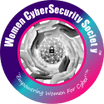ONLINE SAFETY FOR WOMEN & Girls
Empowering women to protect their privacy, security, and confidence online.
In today’s connected world, online safety is no longer optional—it’s essential. Women are often targeted through social engineering, scams, harassment, and digital surveillance. The Women CyberSecurity Society (WCS2) is here to help you take control of your digital security with practical, easy-to-understand tools, resources, and expert guidance designed especially for women.
Why Online Safety Matters
Women experience unique digital threats—from identity theft and cyberstalking to phishing and fake job scams. Knowing how to recognize and prevent these attacks is the first step to staying safe online.
Examples of risks:
- Catfishing and romance scams
- Impersonation or doxxing
- Harassment and cyberbullying
- Malicious links in social media DMs
- Job and scholarship phishing scams
Simple Steps to Stay Safe Online

1. Strengthen Your Passwords
2. Protect Your Personal Information
2. Protect Your Personal Information
Use unique, complex passwords and store them in a trusted password manager. Avoid reusing the same password across accounts.
Pro Tip: Turn on multi-factor authentication (MFA) everywhere possible. Google Authenticator is trustworthy, free, and easy to use.

2. Protect Your Personal Information
2. Protect Your Personal Information
2. Protect Your Personal Information
Think before you share.
Limit what you post on social media, especially details about your location, family, or work.
Example: Avoid sharing vacation or travel plans, boarding passes, event tickets, address details, or daily routines publicly. Learn more.

3. Verify Before You Click
2. Protect Your Personal Information
3. Verify Before You Click
Pause before clicking links or opening attachments.
Check sender details carefully—especially for “urgent” messages about finances, deliveries, or job offers.
To learn how to detect phishing emails, visit 7 Red Flags of Phishing.

4. Secure Your Devices
6. Understand Mis/Disinformation
3. Verify Before You Click
Keep software and apps updated. Use antivirus protection and secure your Wi-Fi with a strong password. Don’t use public Wi-Fi for banking or sensitive accounts.

5. Be Aware of Online Scams
6. Understand Mis/Disinformation
6. Understand Mis/Disinformation
Fraudsters often target women with fake job offers, investment schemes, or relationship scams. When in doubt, research first, trust second.

6. Understand Mis/Disinformation
6. Understand Mis/Disinformation
6. Understand Mis/Disinformation
Not everything you see online is real. False information spreads quickly—especially on social media.
Learn to question sources, verify facts, and recognize when content is designed to manipulate emotions or opinions.
How to stay informed
Not everything you see online is real. False or misleading information spreads quickly—especially on social media and messaging apps.
Learn to question sources, verify facts, and recognize when content is designed to manipulate emotions or public opinion.
Check the credibility of the source and author.
- Compare stories across multiple trusted outlets.
- Use fact-checking tools like Snopes, FactCheck.org, or AFP Fact Check.
- Be cautious of sensational headlines, emotional triggers, or heavily edited visuals.
- Even AI can contain and provide misinformation or disinformation.
Always do your research and avoid sharing When in Question
Remember: Sharing mis/disinformation—intentionally or not—can erode trust, fuel harm, and put individuals at risk.
Online Harassment and Digital Boundaries
If you face online harassment, remember—you’re not alone.
Document evidence, block and report the abuser, and contact authorities or organizations that can help.
Helpful resources:
Learn, Connect & Stay Empowered
Join our community of women who are learning to protect themselves and others online.
🔗 Join WCS2 for free and access online safety guides, mentorship, and training opportunities.
About the Women CyberSecurity Society
Founded in 2018 by Lisa Kearney, an active cybersecurity veteran and consultant, the Women CyberSecurity Society (WCS2) was created by women, for women, and about women — to recruit, retrain, and retain women in cybersecurity.
Through advocacy, education, and global initiatives like International Women in Cyber Day, WCS2 empowers women to build cybersecurity skills, advance their careers, and stay safe in an increasingly digital world.
